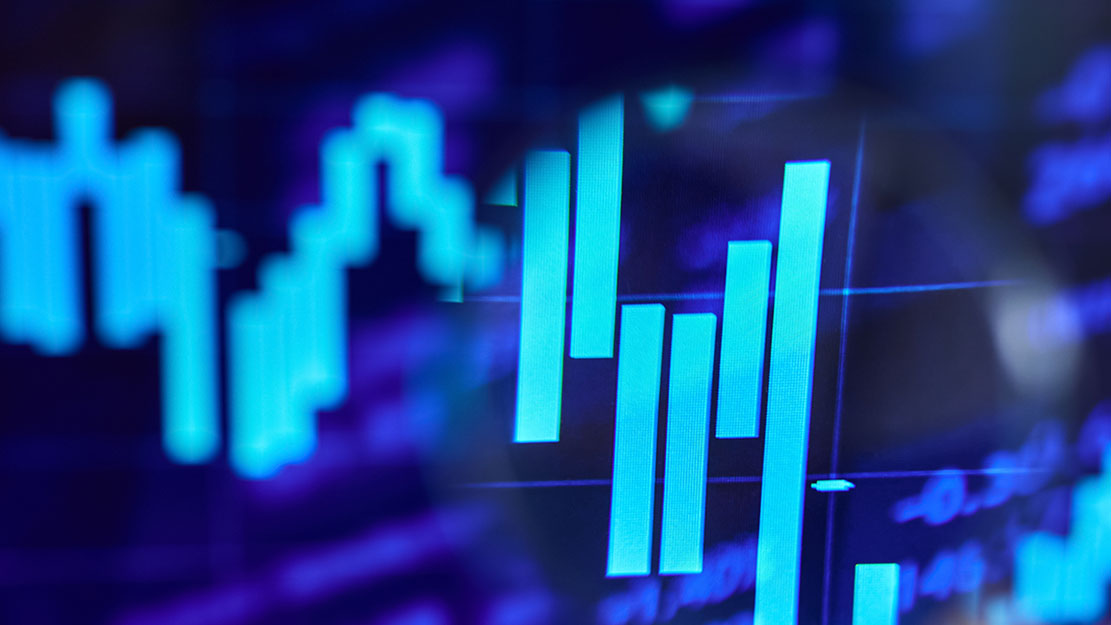Equity Insights offers research and perspectives from Putnam’s equity team on market trends and opportunities.
This month’s author: Michael J. Maguire, CFA, Portfolio Manager
Like many other areas of the global financial markets, the health care sector has dealt with crosscurrents, challenges, and volatile market conditions. However, today’s environment — and the rapidly changing nature of the sector — offers fertile ground for finding underappreciated stocks with significant growth potential.
Breakthrough therapies — exciting, yes, but also valuable
Across the health care sector, the pace of innovation and drug development efficiency has never been more productive. It is leading to breakthrough medicines in areas like diabetes, oncology, and Alzheimer’s disease. But receiving FDA approval continues to be an arduous and costly process, and most therapies fail in clinical trials. So advancements that are approved — especially those that address critical unmet medical needs — offer compelling opportunities for investors. For legacy therapies, the health care landscape is extremely competitive, with a challenging reimbursement backdrop. Given these hurdles, breakthrough therapies have become even more valuable.
Revolutionizing care for a critical unmet need
One recent breakthrough therapy addresses obesity, which is highly prevalent in the United States, affecting more than 41% of adults. It is linked to myriad health problems, such as Type 2 diabetes, cardiovascular disease, and some cancers. Obesity is associated with at least $174 billion in annual excess health care spending, with the highest excess expenditures among older adults, adding a significant burden to the Medicare program.
- Over 40% of the U.S. population is living with obesity.
- In the U.S., fewer than 3% of people with obesity are pharmacologically treated for it.
- The economic impact associated with obesity is over $1 trillion.
- Obesity is the leading risk factor for Type 2 Diabetes and other metabolic diseases.
Two companies have created medicines with the potential to revolutionize obesity care: Novo Nordisk with Wegovy, and Eli Lilly with Mounjaro. In clinical trials, these next-generation diabetes and anti-obesity treatments have produced weight loss of 15% to more than 20%. This could change the lives of people living with obesity — a chronic disease – by raising the bar for treatment and setting a new standard of care. These innovative assets — GLP-1 combination therapies— have cracked the code on reducing obesity and enabled Lilly and Novo to make notable progress in payer coverage for these drugs. The burden of obesity and obesity-related conditions is unquestionably high. We expect these medicines and others in the industry pipeline to make a significant difference in the lives of these patients and reduce the cost burden to the health care system.
The pace of innovation and drug development efficiency has never been more productive.
A potential watershed event for the sector
The Inflation Reduction Act (IRA) of 2022 could significantly impact the U.S. health care system. The ripple effects of legislation designed to transform drug price negotiations could be more rapid and more extensive than currently appreciated. It will be a while before we know the full details and implications of this massive government bill that was passed in 2022. But in our view, the market is not fully contemplating how disruptive this legislation could be for the health care sector. Disruption will present serious challenges for some businesses and will create opportunities for others.
A key component is the mandate to allow the government to directly negotiate for the largest drug costs in the Medicare program. We are unlikely to see drug price negotiations on behalf of Medicare beneficiaries before 2026, but it’s not too early to consider their impact on the pharmaceutical and biotech industries. We expect businesses to adapt their commercial drug launches, R&D investments, and acquisition strategies to account for the new pricing paradigm. Undoubtedly, the IRA will be a headwind for select drugmakers, while for others the impact will be minimal or will provide a boost.
Two companies have created medicines with the potential to revolutionize obesity care.
Post-pandemic demand should be a tailwind for life sciences
Our outlook is more constructive for the medical device segment after three challenging years of pandemic and supply chain issues. While headwinds still exist, Covid-19 lockdowns are behind us, which should help keep demand steady for elective medical procedures. In addition, supply chain disruptions and staffing shortages at hospitals are slowly easing. Thus, we see medical devices as one of the rare industries that may see accelerating EPS growth in 2023.
For life sciences tools, we see trends improving throughout 2023, and we remain positive on the long-term outlook. In the first half, reported revenue growth will likely be challenged by difficult year-over-year comparisons, due to the elevated demand for Covid products and services that we saw in the first half of 2022. However, we believe we should see a return to normal growth patterns in the second half of this year. Moreover, the pharma and biotech industries remain committed to innovation, and we believe tools are primed to benefit from the growth in drug development and biologic research over time.
Examples from our portfolio
Dexcom (DXCM). This medical device company is one of the leaders in continuous glucose monitors (CGMs), which are used by diabetics to monitor their blood sugar levels. Dexcom is in the midst of one of the most exciting periods in its history. It recently launched its latest CGM, the G7 device, which meaningfully improves the form factor and ease of use of its G6 product. Dexcom also just received reimbursement coverage for type 2 diabetics who use basal insulin. This will nearly double the covered patient population. Finally, Dexcom’s new manufacturing site in Malaysia recently came online. This should give it significant manufacturing scale and help improve gross margins. In our view, this combination of product cycle, expanded reimbursement, and margin leverage is one of the most powerful set ups in the medical device industry and should allow Dexcom to realize best-in-class revenue and earnings growth.
Intuitive Surgical (ISRG). Investors have been concerned about the capital sales of Intuitive’s Da Vinci surgical robot, given the impact of the macroeconomic environment on hospitals’ financials. However, we believe this misses the forest for the trees. Surgical procedures, which drive the majority of Intuitive’s revenue, remain robust, and the market opportunity for further penetration of robotic surgery is significant. The company has a multidecade head start and has cultivated an ecosystem around its technology that will be extremely difficult for new entrants to displace. As robotic surgery becomes the standard of care, we believe Intuitive will remain the market leader, with potential for durable, multiyear growth.
A solid foundation: The case for health care over the long term
As a reminder, health care’s defensive qualities and potential for idiosyncratic investment returns are worth noting. The persistent demand for innovative health care solutions brings the potential for attractive returns regardless of the economic cycle. Health care spending represents about 18% of U.S. GDP, and in 2021 it reached $4.3 trillion or $12,900 per person, according to the Centers for Medicare & Medicaid Services. We believe health care spending should continue to grow, given the aging populations across developed countries. Another trend — the opening of emerging market economies to more-advanced health care delivery — is an underappreciated long-term tailwind, in our view.
333483
The views and opinions expressed are those of the author, are subject to change with market conditions, and are not meant as investment advice.
The inclusion of specific securities information in this commentary should not be interpreted as a recommendation to buy or sell or hold any security. It should not be assumed that an investment in the securities mentioned was or will be profitable.
Putnam Global Health Care Fund holdings as of 12/31/22: Novo Nordisk (3.75%); Eli Lilly (5.81%); Dexcom (3.40%); Intuitive Surgical (4.47%).
Our investment techniques, analyses, and judgments may not produce the outcome we intend. The investments we select for the fund may not perform as well as other securities that we do not select for the fund. We, or the fund's other service providers, may experience disruptions or operating errors that could have a negative effect on the fund. You can lose money by investing in the fund.










